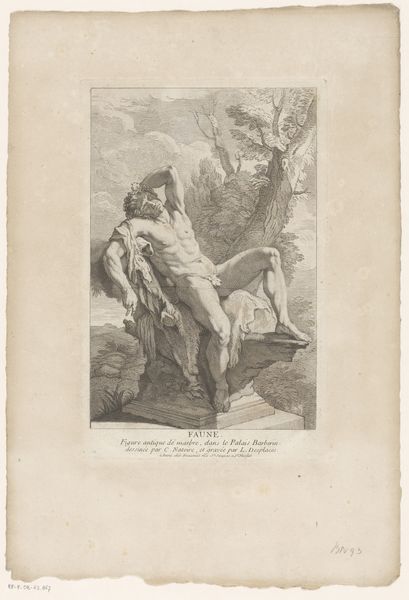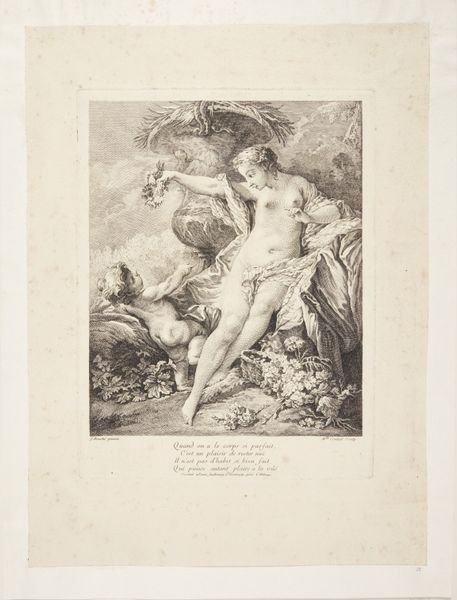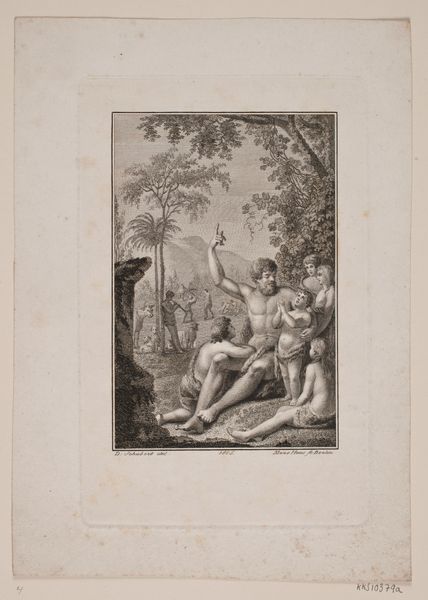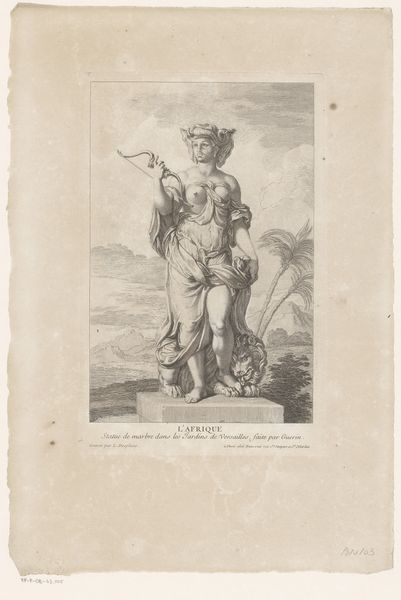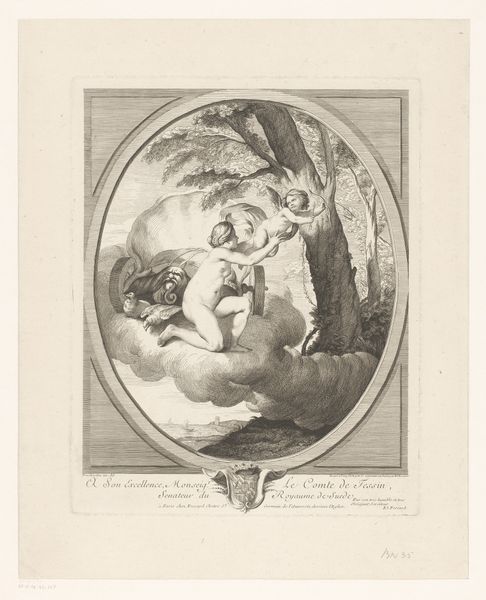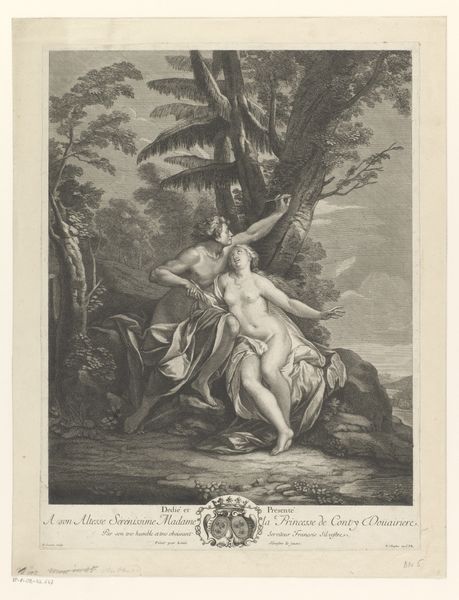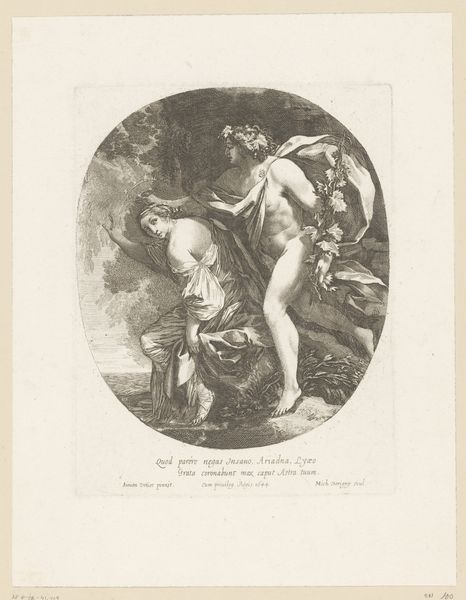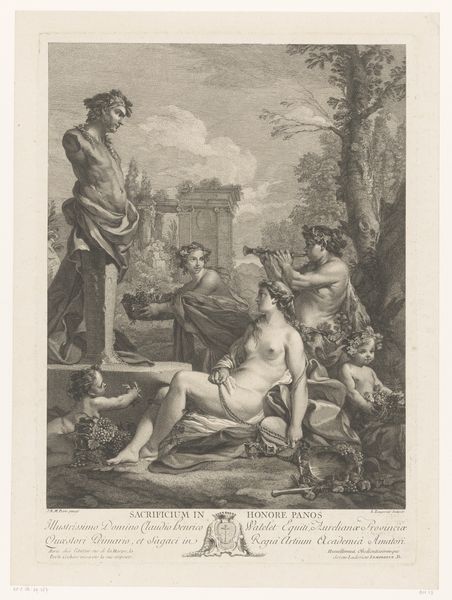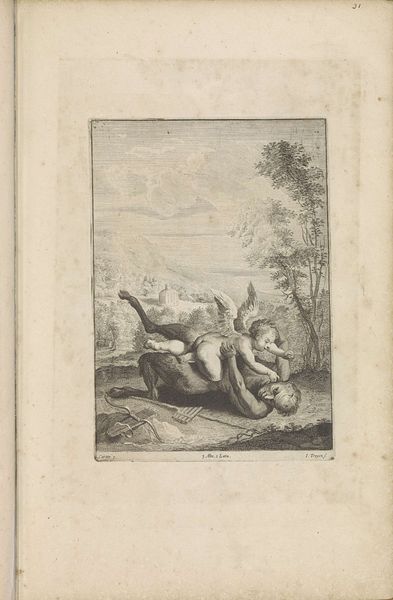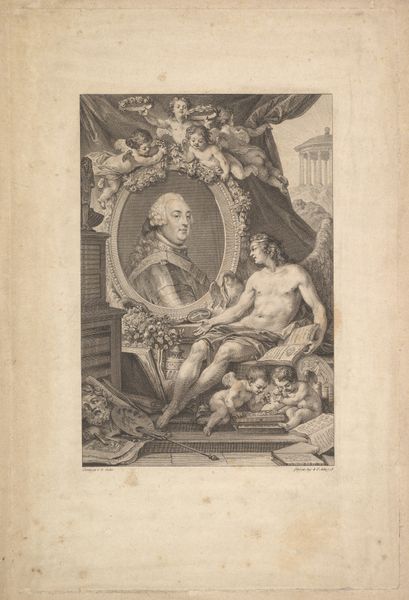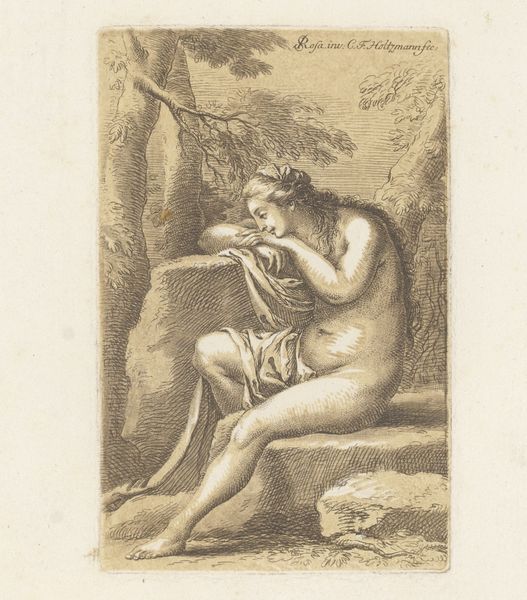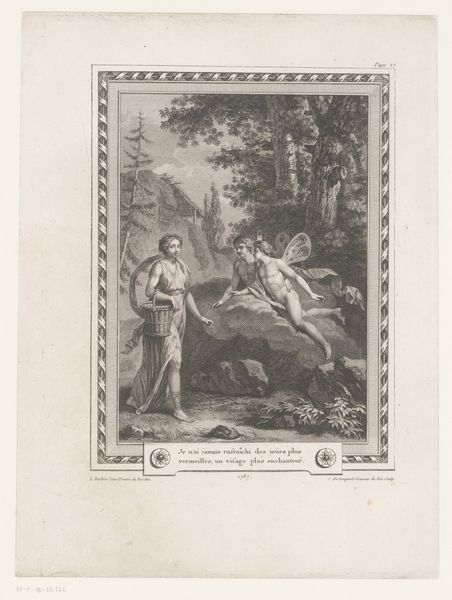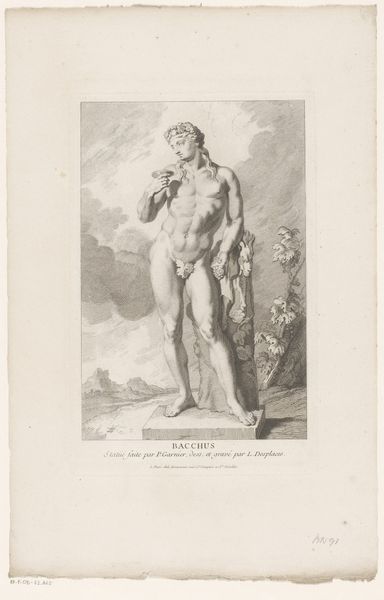
engraving
#
baroque
#
figuration
#
history-painting
#
nude
#
engraving
Dimensions: height 288 mm, width 180 mm
Copyright: Rijks Museum: Open Domain
Art Historian:Activist Editor: Hello, next up is this engraving titled “Beeld van Milo van Croton,” dating sometime between 1697 and 1739, by Louis Desplaces. It depicts Milo, a Greek wrestler, being attacked by a lion. The figure and the scene seem very theatrical to me. How do you interpret this work, especially given its historical context? Art Historian: I see a powerful image, and, more importantly, one embedded in a history of representation and power. Consider the subject: a strong, nude, male figure, evoking classical ideals of masculinity and heroism. But look closer, at his agony, at the beast. How might this scene, reproduced as an engraving, serve the societal structures of its time? Is it celebrating strength or, perhaps more subtly, warning against its limitations? Editor: So, it's less about the literal story and more about what that story represents in terms of social values? Art Historian: Precisely! Consider, for instance, the classical body. How often is that tied to particular conceptions of race, gender, and ability? The way we visualize heroism and strength isn't neutral. This engraving reinforces a very specific ideal, probably deeply linked to notions of colonial power. Who is valorized? Whose stories are told, and by whom? Editor: That’s interesting, I never thought of it like that before. It’s making me question who I tend to empathize with first, just based on these visual cues. Art Historian: Exactly! And that self-awareness is crucial. Art doesn't exist in a vacuum. It's always in dialogue with the world around it, reinforcing certain viewpoints and marginalizing others. So what assumptions do you bring to the image, and what might others? Editor: I’m definitely going to look at other artworks differently now, thinking about their relationship to social and political power, and questioning those underlying narratives. Thanks! Art Historian: Indeed. The artwork becomes a point of departure for crucial questions. Always interrogate what stories art tells, and whose stories are omitted.
Comments
No comments
Be the first to comment and join the conversation on the ultimate creative platform.
